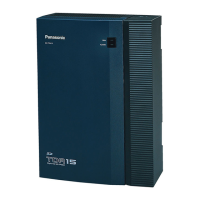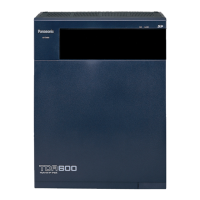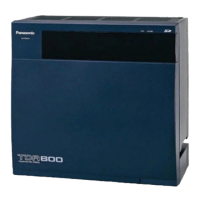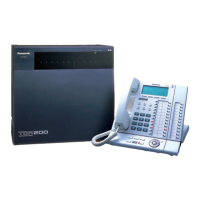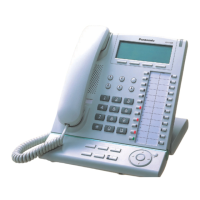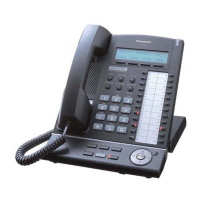1.30 Networking Features
354 Feature Guide
• To establish a QSIG network (→ 1.30.4 QSIG Standard Features), each ISDN (QSIG) connection in a
TIE line network must have the port on one Panasonic Hybrid IP-PBX assigned as a master port, and
the port on the other Panasonic Hybrid IP-PBX assigned as a slave port.
[TIE Line Network Connection Example]
• TIE Line Call by Own PBX Extension Number
TIE line calls can be made using your own PBX extension numbering scheme (1–64).
Explanation:
The PBX first searches local extensions for a matching number. If a dialled number is not found at the
local PBX, the call can then be sent to a remote PBX, and the remote PBX checks the TIE Line Routing
Table for a corresponding entry.
Case 1:
Extension 1012 of PBX-1 dials extension number "1011".
→ The dialled number is found at the local PBX, so extension 1012 of PBX-1 is connected to
extension 1011 of PBX-1.
Case 2:
Extension 1012 of PBX-1 dials extension number "1033".
→ The dialled number is not found at the local PBX, so the call is redirected to the specified TIE
PBX-1
PBX-3
PBX-2
Extn.1000
:
Extn.1999
Extn. 2000
:
Extn. 2999
(A) Master
(B) Master
(C) Master
QSIG Network
(A) Slave
(C) Slave
(B) Slave
Extn. 3000
:
Extn. 3999
PBX-1
TIE Line
PBX-2
InterfaceInterface
Extn.1033
Extn.1011 Extn.1012
TIE Line Network
Outside Caller
Trunk
Trunk
Dials "123-4567".
Telephone Company
Destination: 1033
DID No.: 4567
Dials "1033".

